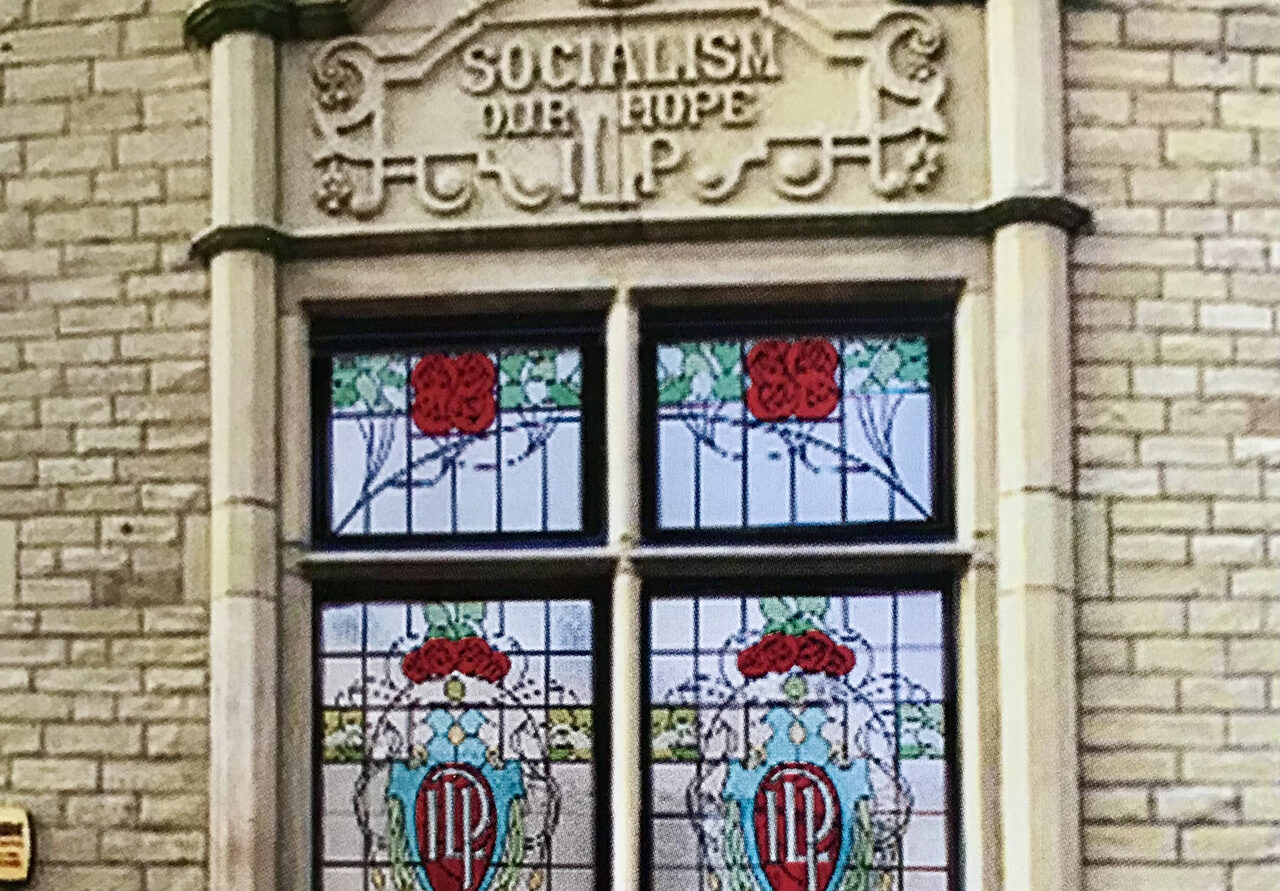Nelson restores socialist past
Council buys workers’ building back for £1
In 1906 the Independent Labour Party, forerunner of today’s Labour Party, collected money through penny subscriptions and bazaars to provide a building for working people in the Lancashire mill town of Nelson. It would be “a place for us”, promised a fundraising leaflet at the time, but also for books, entertainment, lectures, meetings and – an indication of how poor living conditions were at that time – baths.
The fund topped £3,000, a huge sum for mostly low-paid weavers to raise, and a plot of land was bought in Vernon Street to build what would be called the Socialist Institute. Two years later the opening was preceded by 500 people marching through the town behind the Brierfield Brass Band and performed by Blackburn’s MP, the first Labour chancellor of the exchequer Philip Snowden, and his human rights activist wife Ethel.
The two-floor brick building with eye-catching stained-glass windows at the front became a citadel of the Labour Party in north-east Lancashire until the 1980s. But mirroring the decline of Labour’s fortunes nationally at that time, the party relinquished ownership to Lancashire County Council and it became a home for local charities.
Now, after years of structural decline, the old Socialist Institute has been bought by Nelson Town Council for just £1, rebranded the Unity Wellbeing Centre, and given a makeover to restore it to something like its original condition, with help from a £50,000 grant from the Heritage Lottery Fund for public displays documenting the achievements of Nelson’s working people and the life of local suffragette Selina Cooper.
“Nelson has always had a reputation for being quite radical,” said Gary Webb, who with brother Kevin was one of the project’s prime movers. “We had a lot of hardcore Independent Labour Party activists here and they got the membership up to just short of 1,000 people. It was a real hotbed of socialist activity”.
On the first floor is a large concert and meeting room, complete with sprung dance floor, which could accommodate 600. Among politicians to speak there were Keir Hardie, first leader of the Labour Party, and Ramsay MacDonald, the first Labour prime minister. Others who addressed audiences were the socialist and pacifist Fenner Brockway, the West Indian cricketer and first Black peer Lord Learie Constantine, and Sylvia Pankhurst, the leading suffragette and anti-fascism campaigner.
In her early days as a fighter for women’s rights Cooper also spoke there and with another local suffragette, Katherine Bruce Glasier, laid the foundation stone in 1907. In 1913 she helped to organise what was said to be a “married ladies’ tea” at the hall, although privately it was said that “under the guise of married ladies we’re talking revolution”.
Cooper worked in textile mills from the age of 12 and was an early member of local socialist and suffrage campaigns. In the First World War she founded the first maternity centre in Nelson. Webb said that one of the things they wanted to do with the renovated hall was ensure that Cooper’s achievements would not be forgotten.
But the building would not look quite the same as the original without a piece of luck. Back in the 1990s the stained glass windows, two large sections and two smaller ones, had been removed by the council for safe keeping, but were stolen. However, by chance the windows were spotted in a skip and rescued. Two smaller windows disappeared, and the original bigger sections are now on display in the People’s History Museum, Manchester.
Those now gracing the front of the hall are perfect reproductions, with the smaller ones recreated from photos and drawings. “They look stunning in the evening when we turn the lights on in winter,” said Webb. “They look so beautiful.”
Besides housing permanent Cooper and socialism exhibitions the building is home to the ITHAAD Asian community help group, a heathy café called Revive, and a restored reading room with an archive of local socialist books and papers.
